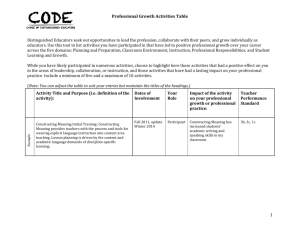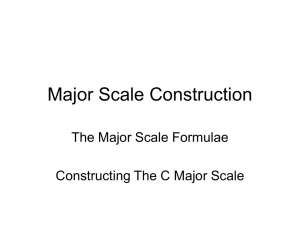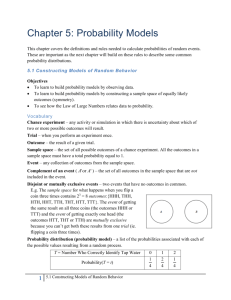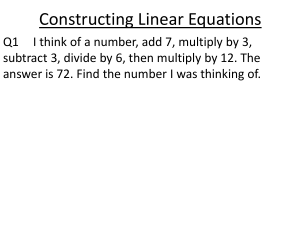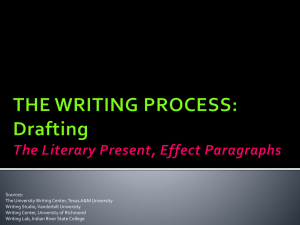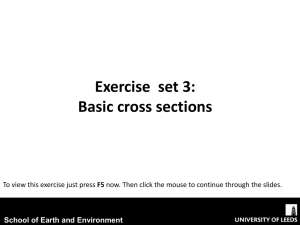Document 7380831
advertisement
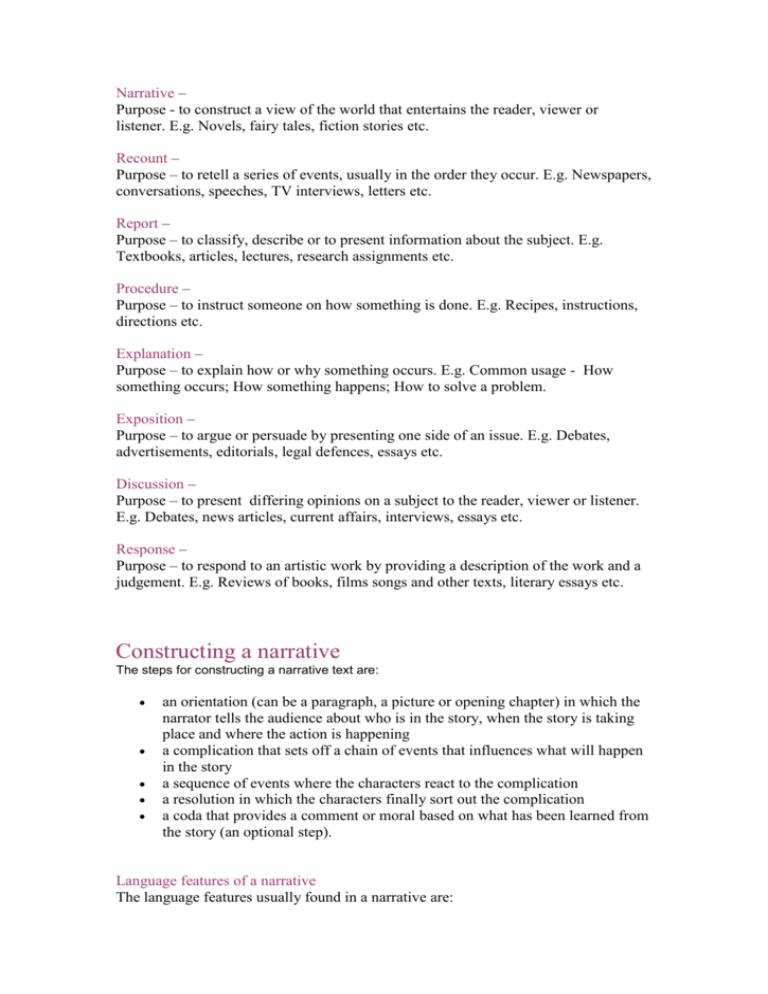
Narrative – Purpose - to construct a view of the world that entertains the reader, viewer or listener. E.g. Novels, fairy tales, fiction stories etc. Recount – Purpose – to retell a series of events, usually in the order they occur. E.g. Newspapers, conversations, speeches, TV interviews, letters etc. Report – Purpose – to classify, describe or to present information about the subject. E.g. Textbooks, articles, lectures, research assignments etc. Procedure – Purpose – to instruct someone on how something is done. E.g. Recipes, instructions, directions etc. Explanation – Purpose – to explain how or why something occurs. E.g. Common usage - How something occurs; How something happens; How to solve a problem. Exposition – Purpose – to argue or persuade by presenting one side of an issue. E.g. Debates, advertisements, editorials, legal defences, essays etc. Discussion – Purpose – to present differing opinions on a subject to the reader, viewer or listener. E.g. Debates, news articles, current affairs, interviews, essays etc. Response – Purpose – to respond to an artistic work by providing a description of the work and a judgement. E.g. Reviews of books, films songs and other texts, literary essays etc. Constructing a narrative The steps for constructing a narrative text are: an orientation (can be a paragraph, a picture or opening chapter) in which the narrator tells the audience about who is in the story, when the story is taking place and where the action is happening a complication that sets off a chain of events that influences what will happen in the story a sequence of events where the characters react to the complication a resolution in which the characters finally sort out the complication a coda that provides a comment or moral based on what has been learned from the story (an optional step). Language features of a narrative The language features usually found in a narrative are: specific characters time words that connect events to tell when they occur verbs to show the actions that occur in the story descriptive words to portray the characters and settings. Constructing a written recount The recount text type retells past events, usually in the order in which they happened. The steps for constructing a written recount are: a first paragraph that gives background' information about who, what, where and when (called an orientation) a series of paragraphs that retell the events in the order in which they happened a concluding paragraph (not always necessary). Language features in a recount The language features usually found in a recount are: proper nouns to identify those involved in the text descriptive words to give details about who, what, when, where and how the use of the past tense to retell the events t words that show the order of events (for example, first, next, then). Constructing an information report The steps for constructing an information report are: a general opening statement that introduces the subject of the report—it can include a short description and a definition a series of paragraphs about the subject—usually a new paragraph describes one feature of the subject and begins with a topic (or preview) sentence a conclusion that summarises the information presented and signals the end of the report. Language features of an information report The language features usually found in an information report are: technical language related to the subject generalised terms use of the timeless present tense. Constructing a procedure text The steps for constructing a procedure test are: an introductory statement that gives the aim or goal a list of the materials that will he needed for completing the procedure a sequence of steps in the order they need to be done. Language features of a procedure text The language features usually found in a procedure are: the use of technical language sentences that begin with verbs and are stated as commands the use of time words or numbers that tell the order for doing the procedure the use of adverbs to tell how the action should be done. Constructing a written explanation The steps for constructing a written explanation are: a general statement about the event or thing a series of paragraphs that tell the hows or whys a concluding paragraph. Language features in an explanation The language features usually found in an explanation are: technical language words that show cause and effect use of the timeless present tense. Constructing an exposition The steps for constructing an exposition are: an introductory statement that gives the author's point of view and previews the argument that will follow—in some texts, the opening statement may be “attention grabbing” a series of arguments that aim to convince the audience - pictures might also be used to help persuade the audience a conclusion that sums up the arguments and reinforces the author's point of view. Language features of an exposition The langauge features usually found in an exposition text are: the use of words that show the author's attitude (modality) the use of words that express feelings (emotive words) the use of words to link cause and effect. Constructing a written discussion The steps for constructing a written discussion are: an introductory paragraph that has a statement or question about the topic a series of paragraphs that give evidence, opinions or arguments for and against the topic a conclusion that gives a final point of view, either for or against the topic. Language features in a discussion text The language features usually found in a discussion text are: the use of generic terms related to the topic the use of words that show a comparison or a contrast the use of words that link arguments. Constructing a response The steps for constructing a response are: a paragraph that introduces the text being judged—this should contain information on the title of the text, the name of the person who constructed it (the author/artist), when it was constructed and a brief summary of the work a description of the text that gives details about the orientation, complication, sequence of events and resolution—this step may include other features of the text a judgement of the text that includes your opinions and maybe some recommendations. Language features of a response The language features usually found in a response are: words that express judgements and the writer's attitudes (modality) the use of the present tense descriptive words.
